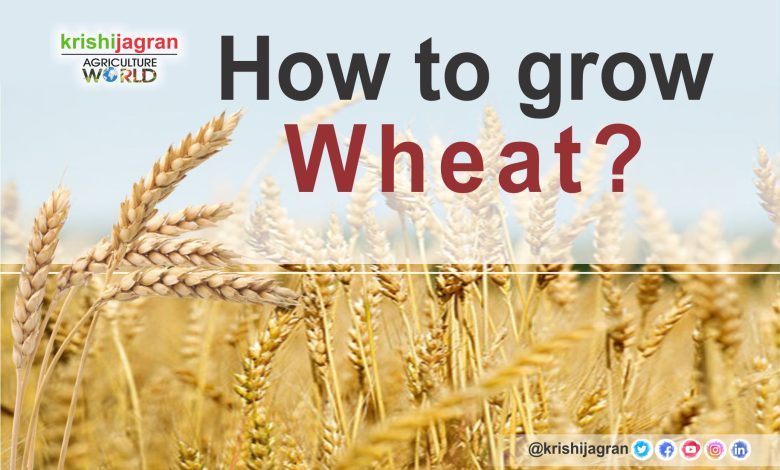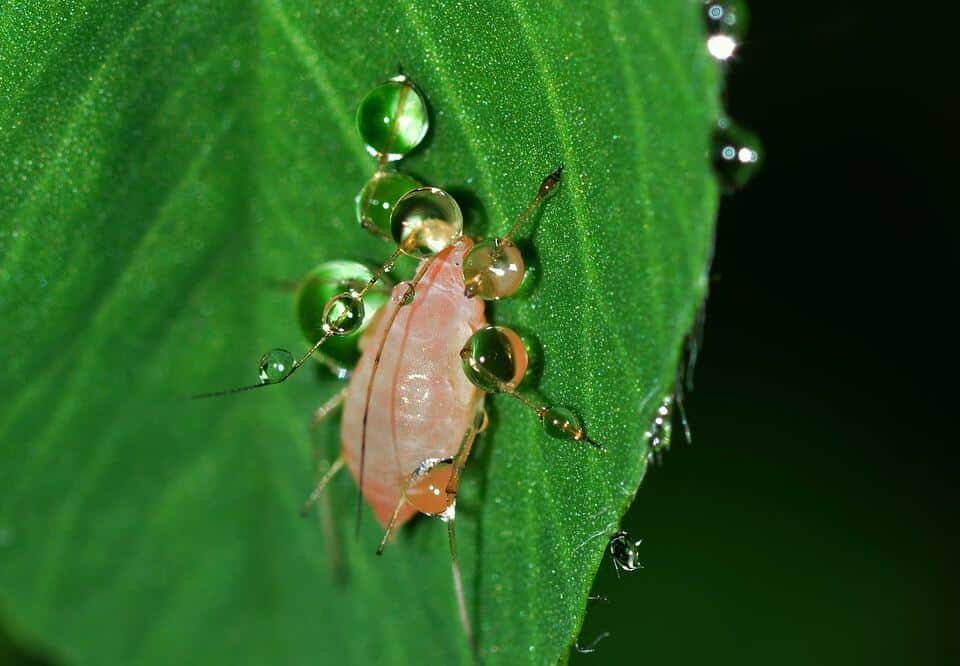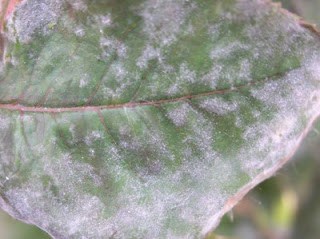Sow Wheat: How, When and Where in [12 Steps + Images]

Did you know that the word wheat comes from the Latin word triticum, which means broken, crushed or threshed, referring to the operation carried out to separate the grain of wheat from the husk that covers it?
In the following article we explainthe most important points when planting wheatand be able to enjoy this delicious food in an ecological way.
Important points for Sowing Wheat:
- When? winter wheat is sownin the fall, while spring wheat is sown, as its name implies, in the spring.

- Where? It requires a lot of sunlight. Minimum 8 hours daily.
- Harvest time? Approximately 5-6 months from sowing.
- How do we prepare the land? The best terrain that can be used is one that has clay soil with an adequate lime content. It is important to make a good supply of organic matter and humus.
- How do we water? If you want to enjoy a good production, you should water it two to three times a year, depending on the humidity of the soil.
- How do we sow? Here step by step.
- How do we harvest? The most convenient time to harvest is when the stems have completely lost their green color and the grain is very firm.
- Favorable associations? Legumes ( beans, broad beans, lentils, chickpeas or peas).
- Plagues and diseases? Bed bugs, aphids, nematodes, rust, powdery mildew.
T he benefits of wheat are undeniable.
Not in vain has it been one of the most important foods for humans for thousands of years.
It is a cereal belonging to the grass family native to Asia and is currently one of the most cultivated plants in the world.
You don’t need a lot of space to plant wheat.although you do have to plan carefully.
In the next article we give youthe best recommendations for your successin its cultivation.
What do we need to sow wheat?
When? The dates
We wantsow winter wheat in autumn,while spring wheat is sown, as its name implies, during the spring.
Harvest: Winter wheat is harvested in early spring. Spring wheat is harvested in the fall.
Where? The temperature and the light
Wheat requires alots of sunlight.
Ideally, it should get around 8 hours of sunlight a day, regardless of the variety.
The ideal temperature for its growth and development is between 10 and 25 ºC constant.
The temperature should not be too cold in winter and not too high in spring. It can withstand temperatures as low as 3°C and as high as 35°C
How do we water? Humidity
It is not a very demanding plant in terms of irrigation and it grows well with 300 or 400 mm of rain, as long as the distribution of this rain is scarce in winter and abundant in spring.
If you want to enjoy a good production,you should water it two to three times a year, depending on the humidity of the earth.
In general, a first abundant irrigation is carried out, after plowing.
Then, irrigation must be carried out during the encañado stage, which is when the appearance of the cane begins to be appreciated.
Later, during bolting, it is necessary to water the soil again since the plant is in full activity and quickly consumes water.
Finally, a last irrigation should be carried out during the maturity of the spikes.
How do we prepare the land? Substrate and nutrients
 Wheat prefers deep soils for the proper development of its root system.
Wheat prefers deep soils for the proper development of its root system.
The best soil to use is one that has clay soil with an adequate lime content.
In case of using a land very poor in organic content, it should befertilize with humus and organic matter.
Clay soils retain too much moisture during rainy winters, while sandy soils require abundant rainfall in spring due to their poor holding capacity.
In general, it is recommended that the soils have good drainage.
Likewise, wheat thrives poorly in acidic soils. He prefers them neutral or alkaline.
The optimal pH varies between 6.0 and 7.5.
How to sow wheat step by step [9 steps]
- Clear the ground.It extracts weeds and remains of previous crops and all kinds of residues to ensure that the plants receive the adequate amount of nutrients.
- Make a plow to level the soil to a depth of 15 cm. When finished, the soil should be as even as possible
- Fertilize the soil.Spread some compost on the soil to improve the overall quality before you start sowing the seeds.This is particularly necessary if the soil is excessively dry or has little rock.Additional composting is not necessaryif the soil is a deep brown color and feels moist to the touch.
- It forms furrows in the ground, separated at a distance of between 15 and 20 cm.Insert the seeds to a depth of between 3 and 6 cm, depending on the variety. In very loose soils, the depth can be greater, up to 7.5 cm.
- Cover the seeds to prevent them from drying out or being eaten by predators.Summer wheat seeds will be covered with about 4 cm of soil, while winter wheat seedsshould be 6 cm deep.
- Water after you have planted the seeds.The soil must remain moist until the wheat begins to grow. In case the area where you have planted spends more than a week without rain, you will have to water it yourself.
- Check your plants regularly to avoid pests and diseases.
- Keep plants free of weeds.
- Protect plants from strong winds and predators.
The harvest and gathering of wheat
If dry wheat is left in the field too long, winds and storms can destroy the crop.
The best way to harvest wheat is with a combine harvester.
Harvesting is done fromlate spring to late fall, depending on the region.
The most convenient time to harvest is when the stems have completely lost their green color and the grain is very firm.
The stem should be cut 30 cm from the ground.
It is best to mow in full sun, when the dew has disappeared, as the harvester works best in such conditions.
You will need to dry the grain after harvest. Air drying produces higher quality beans.
Favorable associations of wheat
They associate very well with legumes (beans, broad beans, lentils, chickpeas or peas). Legumes produce amino acids that wheat absorbs directly.
Common pests and diseases
Bedbugs
They attack the spikes and deform them.
For its control it is recommended:
- Fast and early planting.
- Simultaneous harvest throughout the growing area.
- Biological control through parasites such as Trissolcus grandis and Telenomus chlorops.
- Apply potassium soap on the underside of the plants.
aphids
The presence of aphids is intense from spring to early summer.
If the attack is severe, it produces a decrease in the yield of the crop. In addition to weakening the plants, they can transmit certain viruses.
To combat them, potassium soap can be applied to the underside of the plants.
If the plague persists or is very abundant, after cleaning the leaves with soap, we will applyneem extract, which will act as an insecticide.
Biological control is also recommended by means of the Neuroptera Chrysopa vulgaris, whose larva can devour hundreds of aphids.
Some Hymenoptera are also effective, which live in the larval stage inside the aphids.
nematodes
The nematodes penetrate the root tissue, suck out the cell juice and lay their eggs in the root cortex.
Throughout the year all its stages of development are present.
They are treated with steam sterilization and solarization, which involves raising the temperature of the soil by placing a clear plastic sheet on top of the soil for a minimum of 30 days.
You can also place a cardboard ring around the base of each stem to protect the plant.
Rust
These are fungi that cause pustules on the leaves and ears of cereals, these contain a large number of spores, which are carried by the wind, spreading the disease.
For its control, the use of resistant varieties is recommended.
To prevent its appearance, look for and eliminate the Berberis vulgaris bush in the nearby cultivation areas.
powdery mildew
The favorable temperature for its development is between 15 and 20 ºC.
Its main symptom is the fact that the leaves are covered with a white cottony layer in the shape of a star.
In a strong attack the leaves turn yellow and subsequently dry.
To prevent it, it is best to install a drip irrigation system and apply horsetail as prevention.
In addition, the supply of nitrogen must be limited and resistant varieties must be used.
It also works to eliminate weeds and crop residues and favor the ventilation of the crop.


![Photo of How to Plant Rosemary in [12 Steps and with Photos]](https://www.complete-gardening.com/wp-content/uploads/2022/08/how-to-plant-rosemary-in-12-steps-and-with-photos-390x220.jpg)
![Photo of Alocasia Amazonica: [Characteristics, Planting, Care, Irrigation]](https://www.complete-gardening.com/wp-content/uploads/2022/08/alocasia-amazonica-characteristics-planting-care-irrigation-390x220.jpg)
